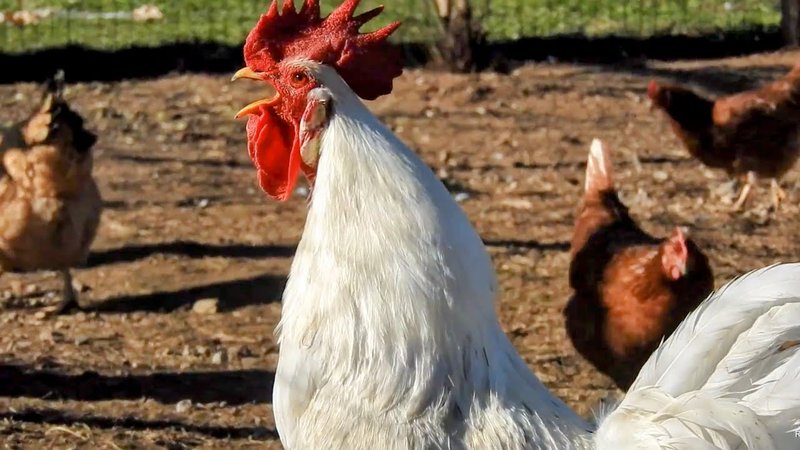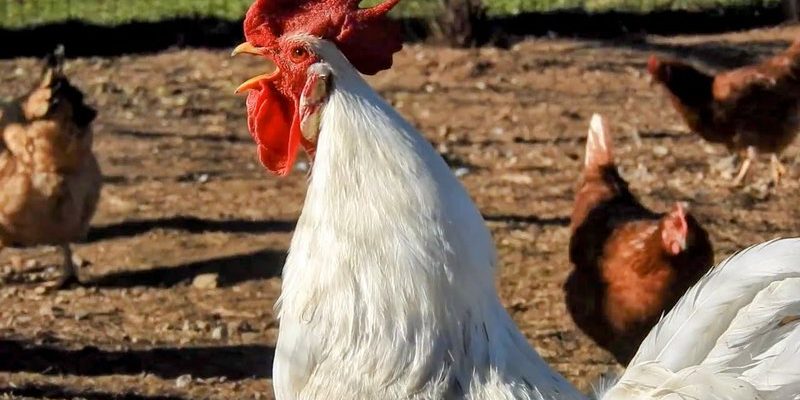
Leghorns, known for their excellent egg-laying abilities, are highly active and social birds. They’re a breed that often expresses themselves loudly and clearly. This can be enlightening if you’re trying to figure out what’s going on in their world. Just like you might interpret a friend’s expressions or tone during a conversation, you can learn to read the vocal clues your Leghorns provide. So, let’s dive into the delightful world of Leghorn vocalizations and what they really mean.
The Common Sounds of Leghorns
Leghorns have a variety of vocalizations, each serving a different purpose. Here are some of the most common sounds you’ll hear:
- Clucking: This is probably the most recognizable sound. A Leghorn’s cluck can indicate comfort or interaction with other chickens.
- Squawking: A loud, harsh squawk often signals distress or surprise. It’s their way of saying something isn’t right.
- Chirping: Young Leghorns, especially chicks, produce soft chirping sounds when they are happy or calling for their mother.
Each of these sounds conveys a message. For instance, a flock of Leghorns clucking together might be chatting about their day, while a sudden squawk could indicate that a predator or an intruder is near. Understanding these vocalizations not only helps you respond appropriately but also deepens your connection with your chickens.
Why Do Leghorns Vocalize?
You might be wondering why these bustling birds are so chatty. Well, vocalizations serve several crucial functions in a Leghorn’s life:
- Communication: Like people, chickens communicate with one another. They express their feelings and needs through sounds.
- Alerting the Flock: When one Leghorn senses danger, they’ll vocalize to warn others. This instinct is essential for their survival.
- Mating Calls: Roosters will also vocalize to attract hens, showcasing their health and vitality.
Each vocalization is a piece of a puzzle that helps maintain flock hierarchy and social bonds. By paying attention to their sounds, you can gain insight into their emotional states and well-being.
Interpreting Vocalizations Based on Context
Knowing what a Leghorn means by its vocalizations is all about context. Here’s how to interpret their sounds based on different situations:
- Feeding Time: When you’re feeding them, expect a chorus of clucks and soft squawks. It’s their way of saying, “Yum!”
- Introduction of New Chickens: If you introduce a new member to the flock, you might hear squawking and agitation as they establish pecking order.
- Health Issues: If a Leghorn is vocalizing excessively or in a distressed manner, it could indicate illness or injury. Pay attention!
Each of these scenarios reflects a different emotional state. By understanding their calls in context, you can quickly react to their needs, whether it’s providing food, easing their fears, or ensuring they get veterinary care.
How Vocalizations Change with Age
As Leghorns grow, their vocalizations evolve. For example:
- Chicks: When they’re young, they chirp softly, mostly seeking comfort from their mothers.
- Juveniles: As they mature, their sounds become more varied, incorporating clucks and squawks to express social dynamics.
- Adults: Once they reach adulthood, their vocalizations become sharper and more pronounced, especially during mating season.
Watching how their sounds mature can be quite fascinating. It’s like witnessing their personality develop over time. Young chicks learning the ropes through chirps gradually turn into confident adults expressing their dominance or contentment through various calls.
Responding to Your Leghorns’ Calls
Now that we’ve explored Leghorn vocalizations, you might be wondering how to respond. Here are some tips:
- Observe: Take time to watch your Leghorns when they vocalize. Observe their body language to better understand their feelings.
- Engage: If they’re calling for attention, spend time with them. Chickens enjoy company, and interaction can reduce stress.
- Maintain Their Environment: Ensure they have a safe, clean environment. Stress often leads to excessive vocalization.
By actively responding to their calls, you’re strengthening the bond you have with your flock. It’s a simple way to enhance their quality of life.
Understanding Leghorn vocalizations is like unlocking a secret language. Each sound carries meaning, indicating everything from happiness to distress. By learning these cues, you can better care for your chickens and create a supportive environment for them. Whether they’re clucking away contentedly or alerting you to danger, those vocalizations are a window into their world.
So next time your Leghorns start chatting, take a moment to listen. You might discover a whole new level of connection with your feathered friends! Happy chicken-keeping!

